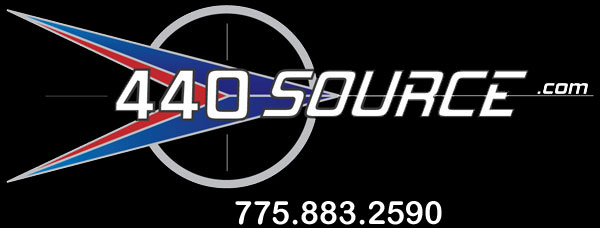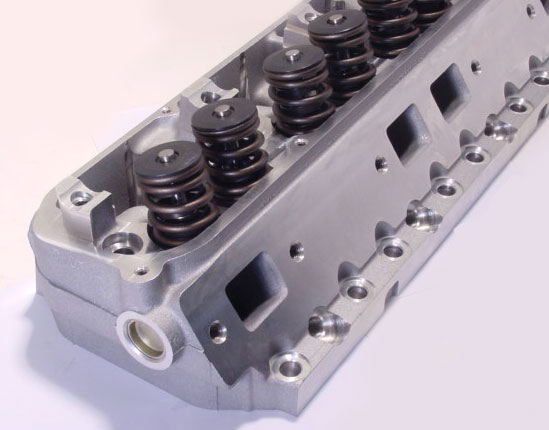

Frequently Asked Questions about our Stealth Cylinder Heads:
Here are the answers to the most frequently asked questions we get about our
Stealth Cylinder Heads. You can click on the questions below to jump down to a
specific question, or scroll down the page to read everything.
If you have a question that is not answered here or on our website, please
let us know.
1) How long have Stealth Heads been on the
market?
2) How many heads are out there running?
3) Will
the valve train components (valve locks, retainers and springs) work with the
cam I am using?
4) What kind of head bolts should I use
with your heads?
5) What kind of head gaskets should I use
with your heads?
6) What kind of spark plugs should I use
with your heads?
7) What else is necessary to do during
installation?
8) I have heard about some Stealth heads
having an issue with cracking. What is the deal?
9) I have heard about some Stealth heads
having an issue with the head gasket overhanging the chamber. What is the deal?

How long have Stealth Heads been on the market?
We first introduced them in 2007, and they have been on the market ever since.
How many heads are out there running?
Over 15,000 heads have been sold since they were first released in 2007.
Will the valve train components (valve locks, retainers and springs) work with the cam I am using?
In our heads, we supply 100% USA MADE 7 degree locks from COMP CAMS, along with Chrome Moly hardened retainers. The locks are the best 7 degree locks you can buy, as you might expect, since they are an American made COMP CAMS product. They are stamped from premium Chrome Moly steel and case hardened. However, we STRONGLY recommend you contact your cam manufacturer and/or check their catalog and look up the matching valve locks, retainers and springs they recommend for use with the specific grind of cam you are using. Generally, you will find the locks and retainers they recommend will either be 7 degree or 10 degree. If they recommend 7 degree locks and retainers (as a rule of thumb, smaller flat tappet hydraulic cams will usually use 7 degree locks and retainers), then generally you are fine with what comes supplied on our heads. If they recommend 10 degree, then we would strongly suggest you upgrade to our Comp Camp 10 Degree locks and retainers, part numbers 145-1002 and 145-1003.
As far as valve springs, our heads are supplied with a SINGLE valve spring. You can compare the spring pressures of the springs your cam manufacturer recommends to the spring pressure of the springs supplied on our Stealth heads. As a general rule of thumb, if your cam manufacturer recommends a single spring, usually the single springs supplied on our heads will work. If your cam specifies a DOUBLE valve spring, then we would recommend upgrading to either the specific springs from your cam manufacturer, or our COMP CAMS 145-1013 dual springs (if the cam is a flat tappet hydraulic) or our 145-1014 (if the cam is a hydraulic roller.) Dual valve springs ALWAYS require matching 10 degree locks and retainers. Dual valve springs also ALWAYS require smaller diameter seals (so that the seal does not rub on the smaller inside diameter of the inner spring.) such as our "PC" Teflon type seals, part number 101-1049. Also, if you are using a Hydraulic Roller cam with our 145-1014 springs, it is also required to run our 145-1015 inner spring locators underneath the spring to properly position the inner spring on these dual valve springs. The 145-1015's will replace the 200-1066 spring cups which come supplied as standard on the heads.
What kind of head bolts should I use with your heads?
Although our heads do use factory length head bolts, unfortunately you can't reuse your old factory bolts. Although, due to age and fatigue, you probably wouldn't want to re-use them even if you could. There are two reasons why you can't use factory head bolts. One is that our heads add more material in the casting around the bolt area for extra strength. The area where the head of the bolt sits is then "countersunk." This is that machined circular area which the head of the bolt fits down into. In order to fit down into that machined recess, our heads require a bolt which has a reduced diameter "12 point" style head. The second reason is that because aluminum is a fairly soft metal, all aluminum heads (no matter what brand) require a hardened washer to sit under the bolt to avoid galling of the head's flat machined surface under the bolt head when the bolts are being tightened. All the head bolt and stud kits we offer include hardened washers and will work with our Stealth heads. We carry American made ARP bolts, and our house brand which is a great option for those on a budget. You can find them both available on our web store here: http://store.440source.com/Cylinder-Head-Bolts-Studs/products/89/
What kind of head gaskets should I use with your heads?
The biggest factor in a head gasket that is used in an application with multiple materials for engine block and cylinder head (for example, a cast iron block and aluminum cylinder heads,) is that the gasket needs to allow for different expansion and contraction rates of the two different parts. What this means is that the engine block will heat up and expand/contract at a different rate than the heads will. This causes the block and head surface to "slide" back and forth over each other many many times as the engine is run through heating and cooling cycles. If the gasket is not designed to allow for this movement, small "channels" will develop, and soon the engine will begin to "weep" coolant out of the parting line between the head and block. All of the gaskets we sell have a teflon coating which works great to seal the cooling ports and avoid this problem. Generally, we have not had any problem with any of the composite gaskets on the market. We have had issues with the factory Chrysler type "steel shim" gaskets. Even when coated with spray copper, they do not allow for the different movement of the head and block, and will often begin to leak coolant after a short time. You can find our head gaskets here: http://store.440source.com/Cylinder-Head-Accessories/products/137/
What kind of spark plugs should I use with your heads?
Due to the area around the combustion chamber being much thicker than factory iron heads, our heads use a 3/4" reach plug. These are the same plugs found on small block and Hemi's, so they are a standard item than can be found at any local auto parts store, and they are available in a multitude of different heat ranges, etc. We have found the Champions to work best for our builds, so we offer them directly for convenience here: http://store.440source.com/Champion-Spark-Plugs-3_4-extended-reach-Set-of-8-NEW/productinfo/138-1000/
What else is necessary to do during installation?
Like any production part, they should be thoroughly inspected to your satisfaction before they are installed. Before final installation, we recommend doing a mockup to check pushrod clearance. Our heads are designed for factory diameter (5/16") pushrods. Usually, when using 5/16" pushrods, clearancing will not be required, however due to core shift in the engine block and other factors we have had a few rare cases in which clearancing has been required with 5/16" pushrods. If you are using larger than factory diameter performance pushrods (such as 3/8",) is not uncommon for some slight clearancing of the pushrod channels to be required. We've found this same situation to apply to Edelbrock heads, and several others on the market as well. If you are using a performance cam, roller rockers, etc, then the mockup is also a great time to check for proper rocker geometry, pushrod length, piston to valve clearance, etc. If you do find any contact between the pushrods and the head, any necessary clearancing can be easily performed with a die grinder or dremel tool.
I have heard about some Stealth heads having an issue with cracking. What is the deal?
Over the 11 years we have been manufacturing Stealth heads, there have been several hundred production "runs" that have been produced. In early 2009, we had ONE production run that was heat treated incorrectly, and was subject to cracking on the outside lower corner of the head, near the lower head bolt. This crack would allow some engine coolant to "weep" down the side of the block. Upon learning of the problem, we immediately ceased all business with the heat treatment company responsible for the problem. We then extended the warranty period of those heads from that defective production run out to a FULL THREE YEARS (24 times the length of the original warranty period) to make sure that anyone who was affected by this problem could get it fixed free of charge within a reasonable amount of time. Before or since this one specific production run, there has never been a single cracking issue that we are aware of.
I have heard about some Stealth heads having an issue with the head gasket overhanging the chamber. What is the deal?
When our heads were first designed, they featured an 84CC combustion chamber. We tested our heads with many different gaskets on the market, such as the Fel-Pro Permatorque, The Fel-Pro wire ring (#1105), ROL, Corteco, Victor, etc, including every single head gasket we offered for sale at the time. None of these gaskets had any problem with overhanging the edge of the chamber. After our heads were in wide release for a while, some people wanted to use the Fel-Pro 1009 gasket, which uses a much smaller bore size for the fire ring around the chamber. In some cases, the Fel-Pro 1009 could overhang the chamber in a specific spot. In response to those who wanted to use the 1009 gasket, we redesigned the combustion chambers in mid 2009. We made the chambers slightly smaller at 80CC's, so that they could be used with ANY head gasket on the market. So, any type of gasket overhang, (which would have only originally occurred with that one specific Fel-Pro 1009 gasket) is no longer an issue, regardless of any manufacturer or model of head gasket you are using.